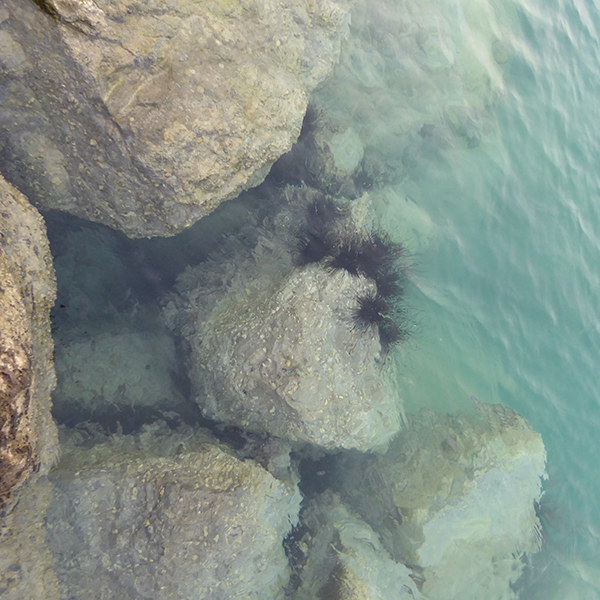The Pioneering Reefs of Abu Dhabi
Last month, our film Natural History Redux screened at the Imagine Science Film Festival held at New York University’s campus in Abu Dhabi. Abu Dhabi is located along the Arabian/ Persian Gulf as one of the coastal Emirates in the United Arab Emirates. Colin was asked to speak on a panel regarding the future of global water resources and the importance that art/ science has to play in bringing these issues into public awareness. However, he also had the opportunity to explore the unique marine habitat in the area.
NYU Abu Dhabi is home base to coral biologist Dr. John Burt, who is studying the remarkable corals that live offshore. He, along with other researchers, have discovered a heat-tolerant strain of zooxanthellae algae that lives symbiotically within the stony corals of Abu Dhabi’s shallow reefs. This algae resists being expelled by the coral (aka bleaching) despite summer water temperatures reaching 36C degrees (97F)!
Colin had the privilege to see these extreme corals firsthand while diving with Dr. Burt’s team on Saadiyat Reef, just a few kilometers from the sands of Saadiyat Island where the NYU campus sits. With the intense summer heat, it is easy to overlook that Abu Dhabi sits on the same sub-tropical latitude as the Florida Keys. During the winter, these reefs can be quite cool, sometimes reaching as low as 20C (68F).

Urban coral habitat: Diadema urchins grazing algae on jetty rocks near Marina Mall, Abu Dhabi, UAE.
Much like Miami, Abu Dhabi is a cosmopolitan coral city. With more than 60km of breakwaters along the city’s waterline, the city is another crucial crucible in which to study urban coral ecology. Abu Dhabi lacks a natural rocky coastline, and thus these boulder breakwaters end up acting as artificial reefs. Large aggregations of long-spined Diadema urchins (seen above) were observed cleaning the breakwater along the massive Marina Mall. Colin also had a chance to snorkel along a recently built breakwater on Saadiyat Island where he found an abundance of Porites, Leptoria, and Cyphastrea corals encrusted onto the granite boulders. Just like in Miami, these man-made coastal barriers are ideal experimental habitats to study the resilient corals that naturally colonize them.
Further offshore, the natural Saadiyat Reef was dominated by a handful of stony coral species, while lacking soft corals, gorgonians, anemones, or large sponges. Algal overgrowth appeared minimal, but there was some evidence of coral disease and recent die-off. Due to frequent wind and dust storms, the water is never particularly clear, averaging about 7m horizontal visibility. The reef also appeared quite young in its development, rising just a meter or so off the sandy seafloor at 7-8m depth. This development coincides with the relatively young age of the Arabian Gulf itself; filling with seawater during the past 8,000 years since the end of the last ice age. The high wind, and lack of freshwater input results in highly saline water that exceeds that of even the Red Sea. The tenaciousness of the corals in the Arabian Gulf, particularly with their unique heat-tolerant symbionts, suggests that corals worldwide may be more adaptable to climate change than currently predicted, and warrant close study by the coral research community.
